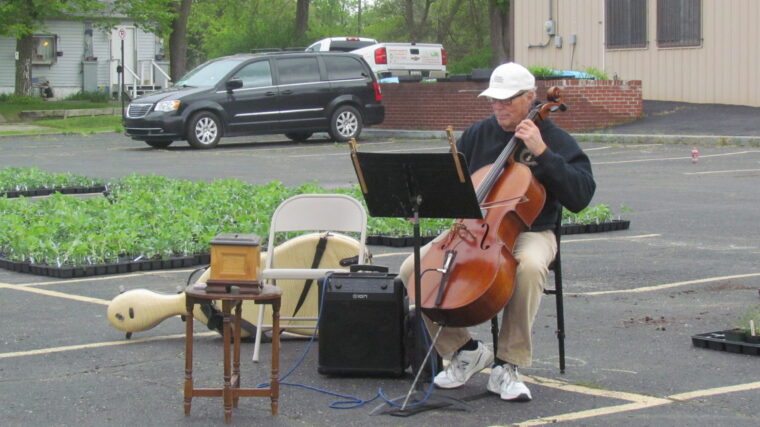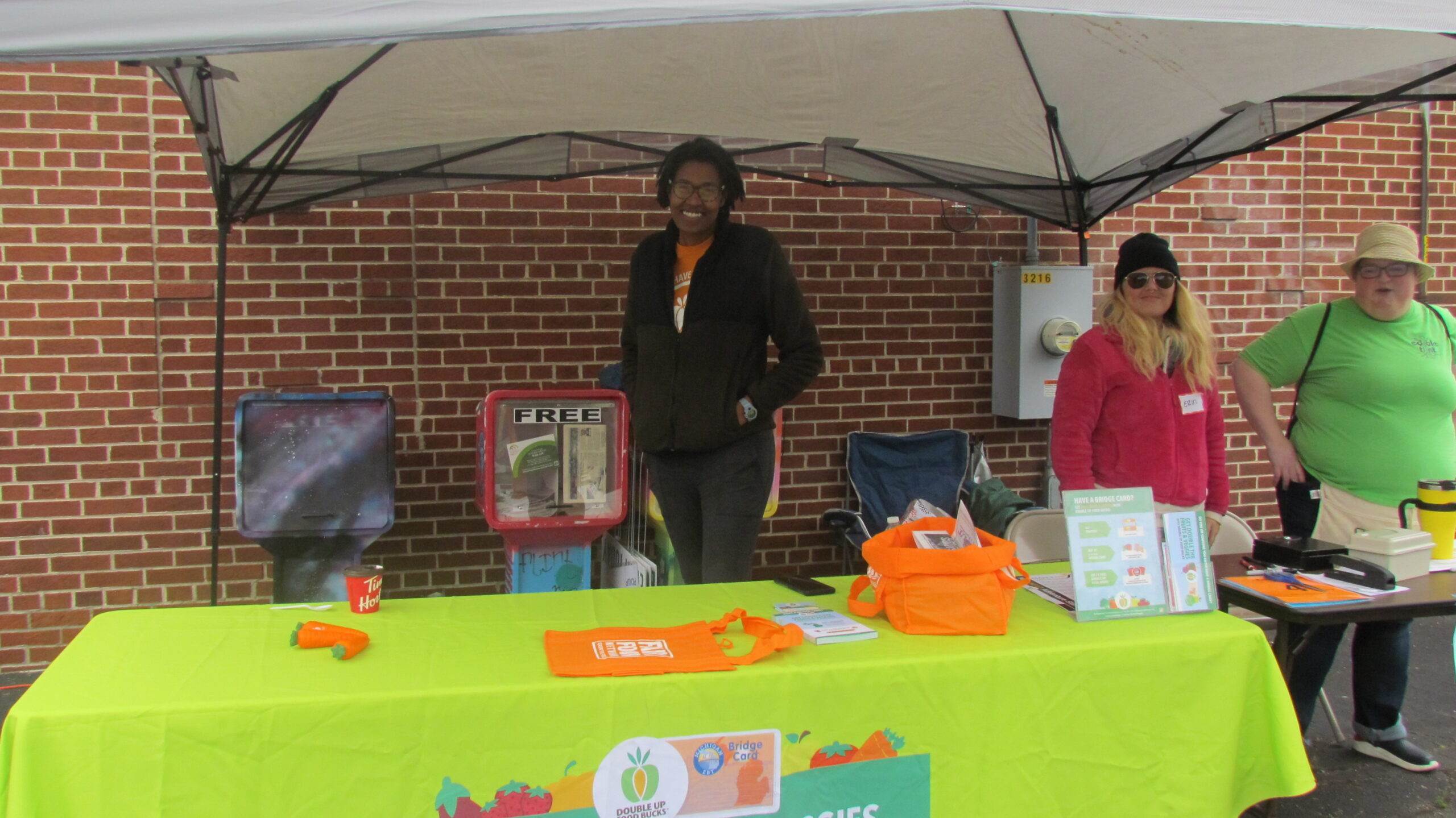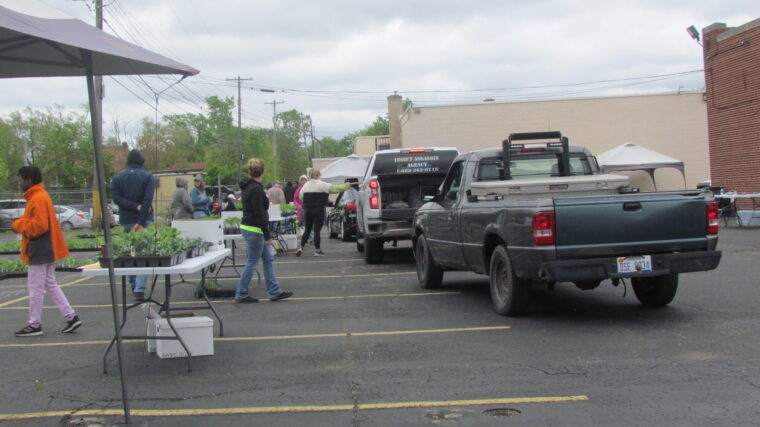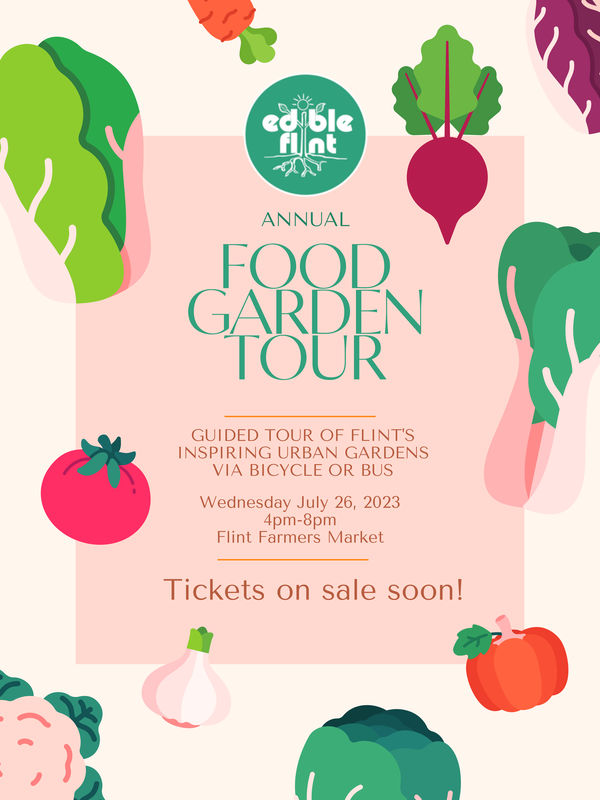Featured photo: Volunteers are the heart of the Annual Food Distribution Day
Written by Tanya Terry, with photos by Tanya Terry
Raven Mathews, president of Edible Flint, recently talked to the Courier about Annual Food Distribution Day, held at the Neighborhood Engagement Hub through Edible Flint. During the event, which was held Saturday, May 20, more kits for gardening were purchased using WIC and SNAP benefits than in previous years. In fact, 20% of eligible purchases were made with SNAP benefits this year. According to Mathews, some people don’t realize they can use these benefits to purchase transplants and seeds because they are used to grow food.
“We sold more kits as well,” Mathews said. “In total, we sold nearly 1,000 garden kits. If everyone were to take all those kits and grow the food in it, we would have approximately a quarter million pounds of food!”
During COVID, the event was switched to a drive-thru. Mathews said Edible Flint is trying to bring back more of the community element.

A live cellist played music for free. Joe Snider teaches cello and is a conductor with the Livingston Youth Orchestra.
Vendors were invited who shared similar missions to that of Edible Flint, such as Double Up Food Bucks.

“Edible Flint’s mission is to reconnect the people to the land and each other through gardening,” said Mathews. “I’ve always found gardening to be very therapeutic.”
Mathews said the educational farm, at 1628 Beach Street, near 12th Avenue is now open Tuesdays, Thursdays and Saturdays, about 10 a.m. – 1 p.m., or, in the summer from 9 a.m.-noon. The educational farm produces an average of two tons of produce a year. The majority of it is donated to Hurley’s Food Pharmacy, which writes prescriptions for people with chronic health conditions for fresh produce.
“Our mission is even more important in Flint where there is a food desert, because obviously people have a difficult time getting access to healthy foods.”
Mathews pointed out the findings of the Flint Leverage Points Project, which explored what made Flint a food desert and what’s driving prices up.
“Quite frankly, produce here is higher than in other places, and part of that is because we have a SNAP benefits program. Business owners figure ‘it’s WIC and SNAP covered. So, I can charge more for it because it’s not really their money.’ That ends of hurting everybody.”
Adam Reigle, volunteer and treasurer for Edible Flint, helped process orders for Annual Food Distribution Day. He also helped coordinate volunteers and assisted at the various stations to make sure the distribution went smoothly. He has volunteered for the event for two years, but also purchased plants for about two years prior to that. He talked to the Courier about the way Distribution Day has changed since the height of the pandemic.
“It still was a drive-thru this year, but we encouraged people to get out of their cars after they got their plants, seeds and compost and go to some of the informational tents that we had set up,” Reigle explained. “We had an area where we could exchange plants or purchase additional plants if there was something that you really wanted. If you didn’t want the plant, you could trade it and get something you enjoy more.”

Reigle started gardening by raising flowers at his own home. About five years ago, he and his family planted small crops in pots and raised those. Four years ago, Reigle built a series of raised flower and vegetable beds in their backyard as a present for his wife.
“We grow quite a bit of produce for our family,” Reigle stated. “It’s just the three of us, with my wife and son. It’s a learning experience. Our son is now 7. He goes out to the garden, and he’ll help his father, pull weeds, or pick fruit or pick vegetables and just get to be part of the process of raising food to actually eating it.”
Reigle said Annual Food Distribution Day is great because it provides people with educational opportunities and also social opportunities and the opportunity to learn more about raising your own food and healthy, sustainable urban agriculture.
“It’s really interesting, and I think as we become more global and recognize that, as people, we kind of lose our sense of touch or intimacy when it comes to raising our own food and growing things. Most people wouldn’t know how to do that. We’ve become too far removed, and I think it’s really important that we know and have some sort of connection with what we eat.”





